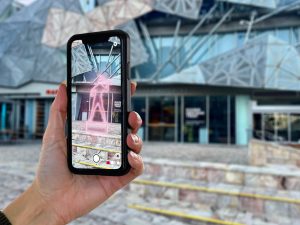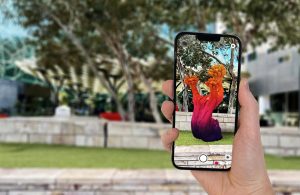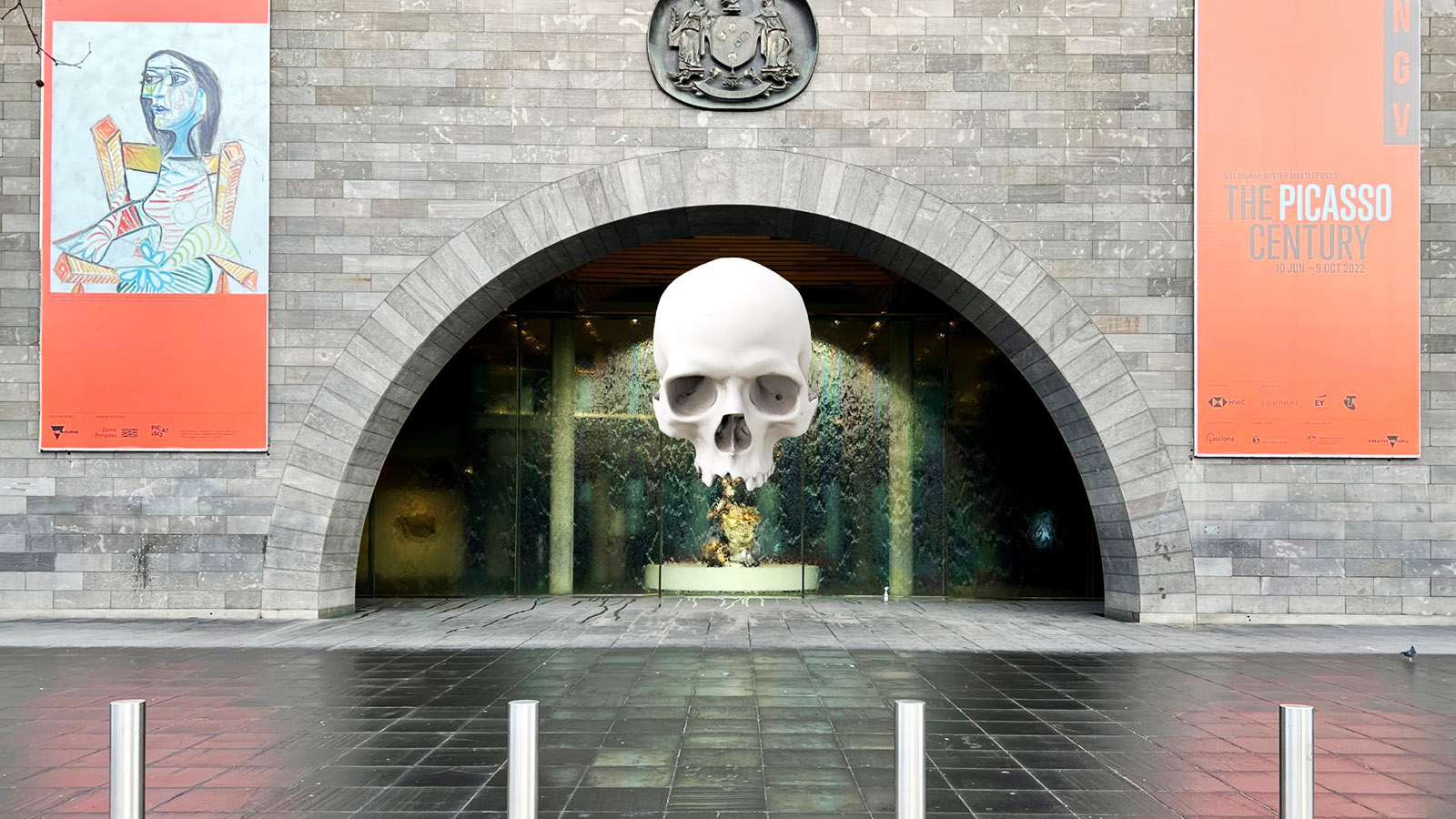A floating skull, a neon pink silhouette of a Kamilaroi warrior, and an unearthly shrub growing out of a stiletto heel are just some new sights that are now dotting Melbourne’s Arts Precinct. Not literally, though — they’re part of AR.Trail, spearheaded by the National Gallery of Victoria (NGV) in partnership with Acute Art, that also happens to be Australia’s first-ever augmented reality art tour.
What happened

Image: Courtesy of Acute Art, Fed Square, NGV, ACMI & Koorie Heritage Trust supported by Creative Victoria
NGV launched AR.Trail last week, with the stated aim of “draw[ing] visitors into Melbourne’s cultural corridor and enhanc[ing] their city experience.” With the Acute Art mobile app in hand, participants can follow a self-guided tour through locations including that of the project’s partners, Fed Square, ACMI, and Koorie Heritage Trust, to reveal 22 site-specific AR works.
The exhibition features projects by Acute’s stable of artists (KAWS, Marco Brambilla, Olafur Eliasson, David Shrigley), but as well, newly commissioned works. Reko Rennie’s “OA Warrior I (pink),” Ron Mueck’s “Head Space,” and Patricia Piccinini’s “Shoeform (Sprouting)” are notable for bearing out a local focus, appearing in AR for the first time, and representing significant artworks in NGV’s collection.
AR.Trail follows Acute Art’s previously AR-based tours, including 2021’s Unreal City in London, further contributing to its cornering of the AR art space.
Why it matters

Image: Courtesy of Acute Art, Fed Square, NGV, ACMI & Koorie Heritage Trust supported by Creative Victoria
Much has of course been made about AR’s potential to transform the art experience, particularly over the past two years’ worth of lockdowns. But for Daniel Birnbaum, Artistic Director of Acute Art, the medium has more up its sleeve. AR and virtual works, he wrote, could be “distributed across geographies in novel ways, connecting local audiences in ways that create entirely new exhibition formats.” Additionally, “Will these technologies change the structure of the art world and make possible new forms of global exchange for a future in which we will be less keen to jump on a plane?”
The answer trends towards yes. Among the many marks that lockdowns have left on the cultural sector, hybridity is perhaps the one that’s here to stay. Already, museums are exploring ways to bridge the physical and digital to support their goals and enrich the visitor experience. The NGV itself continues to host virtual tours, aided by Matterport, that will ensure its offerings reach beyond geographical limits.
The institution’s endeavors are part of a larger project by the country to drive cultural footfall and engagement, particularly as tourism to the region has reawakened. AR.Trail has been funded through the Victorian Government’s Melbourne City Revitalisation Fund, echoing efforts by the NSW Government, which, earlier this year, supported an online campaign with six Sydney museums to drive local and international visitation.
What they said
“During the global pandemic, the NGV developed and presented cutting-edge virtual art experiences so that audiences continued to have access to arts and culture — even during the periods of lockdown. This Australian-first collaboration with Acute Art proudly builds upon NGV’s leading multimedia experience and will allow audiences to discover art in a way never-before possible.” — Tony Ellwood AM, Director, National Gallery of Victoria



